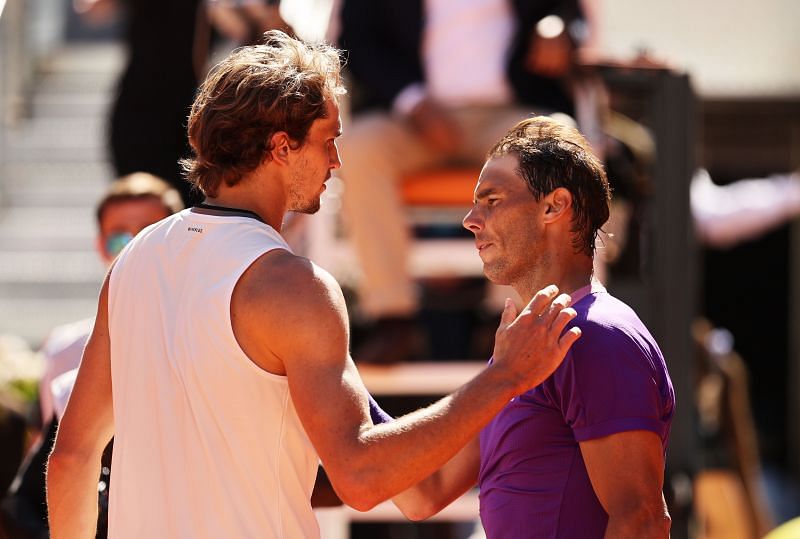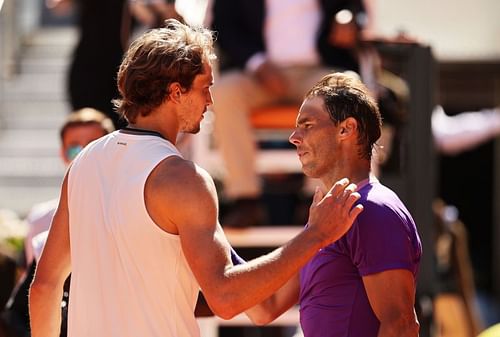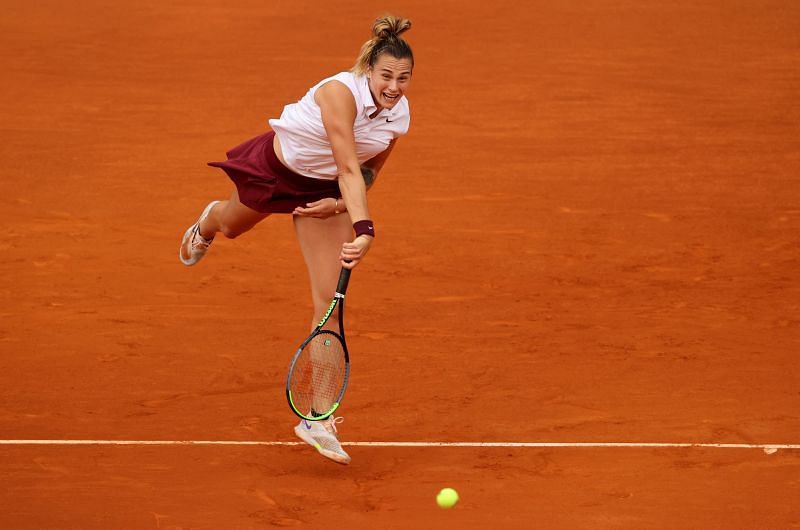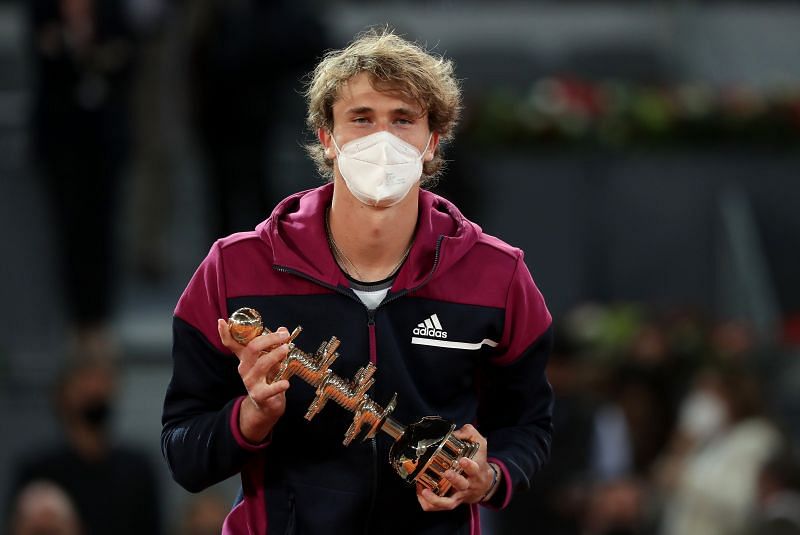
3 things we learned from the 2021 Madrid Open

There was finally some semblance of normality on the European clay last week, as the Mutua Madrid Open opened its turnstiles to one of the biggest crowds of the season. The tournament, which runs concurrently across the ATP and WTA tours, allowed up to 4,800 fans inside the stadiums - significantly more than the Barcelona Open a week ago, which allowed only 1,000 spectators.
But there was nothing normal in the manner in which a host of top names came crashing down. Rafael Nadal failed to go beyond the quarters, Naomi Osaka lost in the second round, and Stefanos Tsitsipas was sent packing in the third.
On that note, here is a look at the three most important things we learned at the Caja Magica this year.
#1 Aryna Sabalenka can compete against the very best on any surface

Nine consecutive match wins, 16 wins on the trot on red clay, a firm stranglehold over the No. 1 ranking - it seemed Ashleigh Barty had the entire tour in the palm of her hands when she arrived at the Madrid Open. Except that at the Caja Magica, the Barty juggernaut came to a juddering halt.
The big question on the eve of the women's final was whether Barty would remain unbeaten, and thereby firmly establish herself as the Queen of Clay. But Aryna Sabalenka, having lost twice to Barty this spring (including the Stuttgart final last month), answered in the most emphatic manner possible.
The Belarusian laid down a trap, and Barty, for all of her court craft, walked straight into it.
It is not rare to see 6-0 sets in women's tennis, but there was a certain mystique at the way Barty shrank in the face of Sabalenka's ferocious hitting. It has often been said that when Sabalenka's game is firing on all cylinders, she is almost untouchable. And she proved that in the opening stanza, where she hit 11 winners to just one unforced error.
Barty eventually woke up to mount a stirring comeback, just like in the Stuttgart final. But Sabalenka was not to be denied, and she was able to shut the gates in the third set and seal a terrific week.
In the aftermath of her three-set victory, which earned her the first non-hardcourt title of her career, Sabalenka admitted that she played on adrenaline at times. The Belarusian swung at every opportunity to prevent another flaring up of her leg injury, which she had picked up in Stuttgart.
"I think because of the leg, I was really focused on the level of my shots, to hit it clean and heavy, make sure I don't really need to move a lot," Sabalenka said after the match. "I think that's why there were a lot of winners and a lot of great points and really quick matches.''
With this win, Aryna Sabalenka has proven that she is no one-trick pony. She has done something that had started to feel impossible - beating Ashleigh Barty on clay - and she is suddenly among the top contenders for Roland Garros.
#2 Alexander Zverev is a match for even the best claycourters in the world

What started as a procession turned into a parade of surprises in the men's section of the draw. Two of its highest-seeded players came unstuck in the Round of 16, as Stefanos Tsitsipas and Daniil Medvedev were sent packing by the effervecent duo of Casper Ruud and Cristian Garin respectively.
The top seed and tournament favorite Rafael Nadal joined the rolling parade as he fell to a shock straight-sets defeat at the hands of Alexander Zverev in the quarterfinals.
Zverev has not been one to shy away from a challenge, but there was an element of uncertainty regarding his physical condition before the tournament. A persistent elbow issue had threatened to derail his claycourt campaign; he had won just two matches in three tournaments since capturing the Acapulco title.
But in beating Nadal for the first time on clay, the German was imbued with unbreakable confidence for the rest of the tournament.
There is a mixture of bad luck and mental exhaustion associated with beating the Spaniard, often called 'The Nadal Curse' by some fans. Andrey Rublev caught it in Monte Carlo, and Zverev seemed in line to fall prey to it too. But the 24-year-old went ahead and comfortably beat the second best claycourter in the world - Dominic Thiem - to charge into the finals.
Zverev did look a little flustered in the opening set of the final against Matteo Berrettini though. The big-hitting Italian snatched the opening set, which stretched over an hour, in a thrilling tiebreak. But Zverev found a window to exploit in the second, when a nervous Berrettini coughed up a series of errors to gift away the break.
Once the German got the lead, he served out the set and rode his momentum into the decider. Berrettini had passed his peak form, and the unforced errors kept mounting down the home stretch. Zverev broke Berrettini twice in the final set to complete his comeback.
The week marked the second time Alexander Zverev had beaten three top 10 opposition en route to the title. But on clay, it may have been the most emphatic statement of his career yet.
#3 Rafael Nadal's form is a cause for concern, but not enough reason to panic

For the best part of the last decade, Novak Djokovic has been the one player that could make Rafael Nadal look vulnerable on clay.
But Djokovic was missing at the Madrid Open. And Nadal's second-best challenger, Dominic Thiem, was returning from a sabbatical. The likes of Stefanos Tsitsipas and Daniil Medvedev had fallen before the quarterfinals stage, so Nadal's path towards a sixth title looked as clear as daylight.
But an error-strewn display in the last eight - one he called 'a backward step' - has pushed the Spaniard on the brink of a mini-crisis in the lead-up to Roland Garros.
"The feelings are negative. This is an important week for me," Nadal said. "It is a week that makes me excited although it is a complicated tournament for me due to the conditions. These days I have taken steps forward and this is one backward. Things started well but in the important moments, in the moments that I had to define the set, I have done everything wrong."
But you can never write off the 20-time Grand Slam champion on his beloved clay. The Rome Masters this week - a tournament where Nadal is an eight-time champion - could give him some much-needed impetus to return to winning ways.